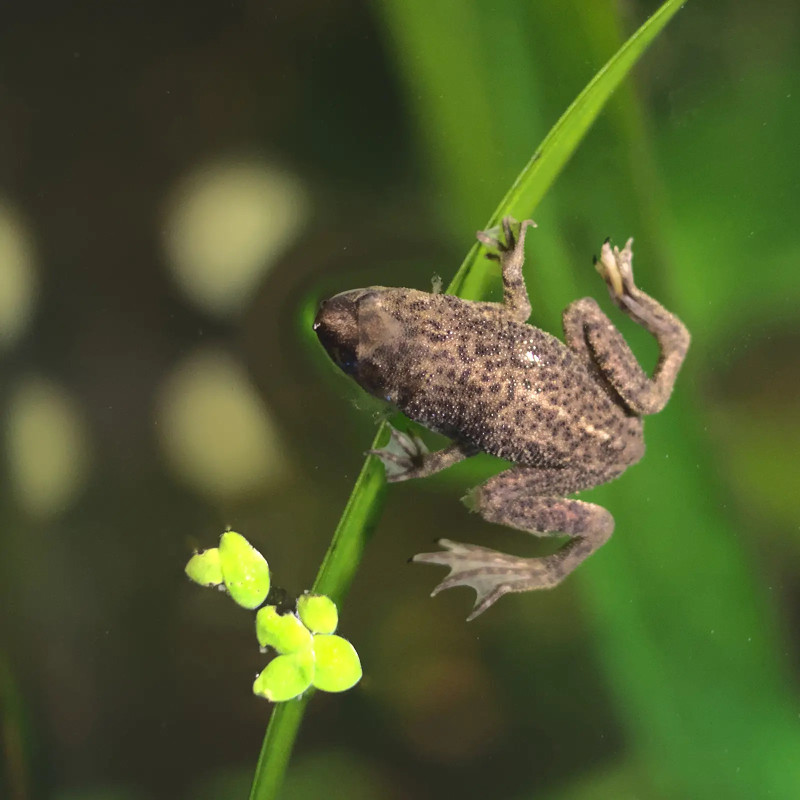Stocks Available
Albino Mystery Snail
SKU:118932
POMACEA SP.
N/A

Stock Available
Introduction: • Species: Dwarf African Blonde Frog • Common Names: Dwarf African Frog, Blonde African Clawed Frog • Natural Habitat: Native to slow-moving rivers, ponds, and wetlands in Central Africa, particularly in the Congo Basin. Physical Characteristics: • Appearance: Small, flattened body with webbed feet and a light, blonde coloration that varies between beige and pale yellow. • Size: Grows up to 1.5 inches (3.8 cm) in length. • Lifespan: 5-8 years in captivity with proper care. Habitat Requirements: • Tank Size: Minimum of 5 gallons for a small group; prefer shallow water setups. • Water Conditions: o Temperature: 72-82°F (22-28°C). o pH: 6.5-7.8, with slightly acidic to neutral water being ideal. • Aquascaping: Provide plants, hiding spots, and smooth substrate to prevent injury to their delicate skin. Diet: • Primary Diet: Carnivorous; feeds on small invertebrates and microorganisms in the wild. • Supplemental Feeding: Accepts live or frozen foods like bloodworms, brine shrimp, and small insects. Sinking pellets designed for frogs are also suitable. • Feeding Frequency: Feed every 1-2 days, offering small portions at each feeding. Compatibility: • Temperament: Peaceful and social, often seen interacting with other frogs or small fish. • Suitable Tank Mates: Can be kept with other small, non-aggressive fish like tetras or guppies, as well as other dwarf frogs. • Incompatibilities: Avoid larger, aggressive species or fast-moving fish that may outcompete them for food. Care Level: • Difficulty: Moderate; requires stable water conditions and appropriate food. • Health Monitoring: Watch for skin infections, which can occur if water quality is poor. Ensure they receive a balanced diet to prevent malnutrition. Breeding: • Breeding in Captivity: Can be bred under proper conditions, though success varies. Females lay eggs on plants, and tadpoles develop into froglets in a few weeks. • Spawning: Frogs engage in amplexus, where the male clasps the female to fertilize her eggs as they are laid. Economic Considerations: • Market Demand: Moderately popular due to their small size, peaceful nature, and unique appearance. • Wholesale/Retail Pricing: Typically affordable and widely available in the aquarium and amphibian pet trade. Sustainability and Conservation: • Wild Population: Generally stable, but their habitats face threats from pollution and habitat destruction. • Aquaculture Efforts: Widely bred in captivity, ensuring wild populations remain unaffected by the pet trade. • Regulations: No significant trade restrictions or regulations for this species. Conclusion: The Dwarf African Blonde Frog is a charming and peaceful addition to small, community aquariums. Its small size, ease of care, and unique behavior make it an appealing choice for both beginners and experienced amphibian keepers. With proper care and attention to water quality, these frogs can thrive and add an intriguing dynamic to aquatic setups.
Data sheet
Customers who bought this product also bought: